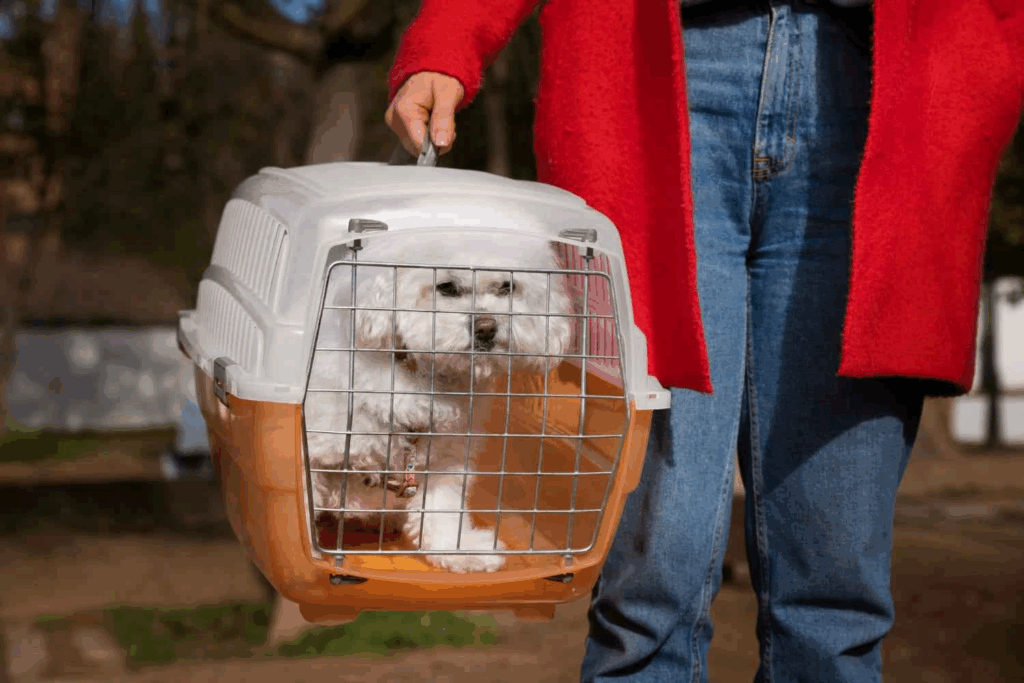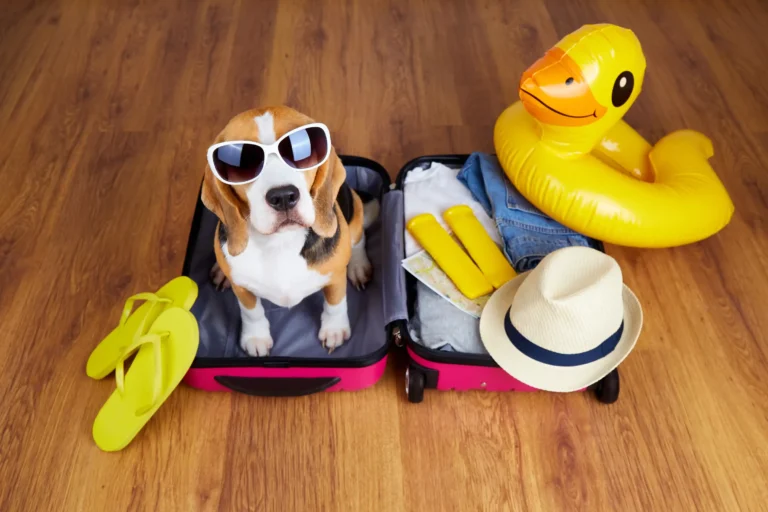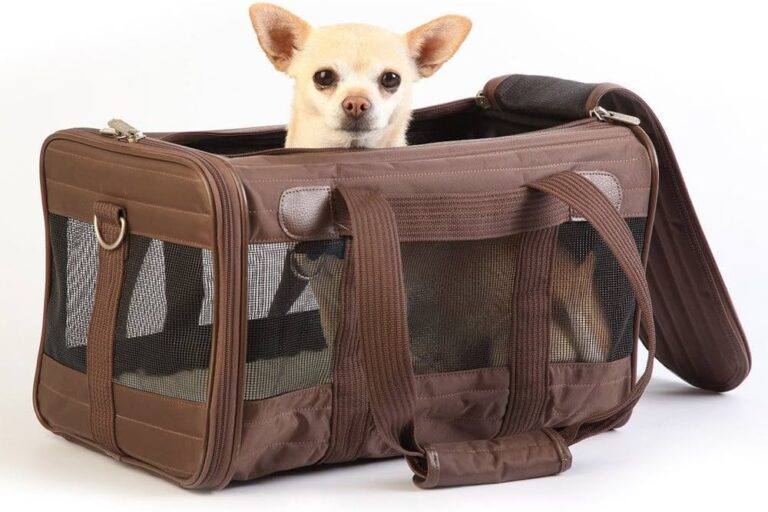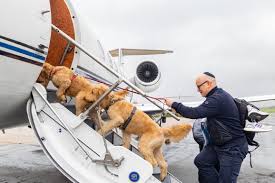Taking to the skies with your favorite furry friend can be a joyous adventure, but it comes with its own set of rules and regulations. Especially when it comes to small dog breeds, there are specific air travel guidelines that need to be followed. In this comprehensive guide titled “Fly in Style: Air Travel Rules for Small Dog Breeds,” we will delve into everything you need to know for a safe, comfortable, and hassle-free journey with your canine companion.
Understanding the nuances of airline policies can be a daunting task. Not to worry, we’re here to break it all down. From preparing your dog’s travel kit to navigating through security, this guide covers it all. We also provide a list of airlines that are most accommodating of small dog breeds. These insights will ensure you are well-prepared and confident before setting foot on the plane.
The journey doesn’t end when the wheels touch the ground. We’ll guide you through what to do upon arrival, how to help your dog adjust to the new environment, and tips for making the most of your travel experience. The goal is to make air travel a breeze for you and your little furry friend.
In conclusion, “Fly in Style: Air Travel Rules for Small Dog Breeds” is your go-to guide for everything related to air travel with your small dog. So buckle up and get ready for a smooth ride. Let’s make your next journey as comfortable and enjoyable as possible for both you and your beloved pet. 🐾🛫
Selecting the Right Carrier for Your Small Dog
Selecting the appropriate carrier is a fundamental step in ensuring your small dog’s comfort and safety during air travel. A well-chosen carrier not only keeps your dog secure but also contributes to a stress-free experience for both the pet and the owner.
Size and Comfort Considerations
The carrier must be spacious enough for your dog to stand, turn around, and lie down comfortably. A cramped carrier can cause anxiety and discomfort, making the journey stressful. When in doubt, opt for a slightly larger size while still adhering to airline regulations. Always measure your dog while they are standing and lying down to ensure you choose a carrier that fits appropriately. Pay attention to both the weight and height limits specified by airlines, and remember that your pet’s comfort should always come first.
Choosing the Right Type of Carrier
There are different types of carriers designed for air travel, and selecting the right one depends on your dog’s specific needs as well as the airline’s requirements. Soft-sided carriers are generally preferred for cabin travel because they offer flexibility and can fit more easily under airplane seats. These carriers tend to be lightweight and easier to carry through crowded airports. Hard-sided carriers, while often heavier and bulkier, provide superior protection and are recommended for dogs who may be rougher on their enclosures or for those traveling in the cargo hold.
Key Features to Look for in a Carrier
When evaluating carriers, there are several features to consider beyond just size and material. Look for models with strong zippers and locking mechanisms to prevent your dog from escaping. Padded interiors can increase comfort during long flights, and removable liners make cleaning up accidents easier. Carriers with expandable sides can offer extra room once you are settled, but they must still meet the airline’s in-flight size restrictions. Additionally, carriers with a top-loading option can make it easier to place and remove your dog without unnecessary stress.
Ventilation and Visibility
Good ventilation is crucial for your dog’s health and comfort during travel. Choose a carrier with mesh panels on at least two or three sides to ensure sufficient airflow. Proper ventilation helps regulate your dog’s temperature and prevents overheating, especially during summer months or long waits at the airport. Visibility is another important factor. Dogs often feel calmer when they can see their surroundings and their owners. Carriers with large mesh windows allow pets to feel less isolated, reducing anxiety during travel.
Portability and Ease of Handling
Traveling through an airport with your dog can be hectic, so portability is key. Look for carriers with comfortable, adjustable shoulder straps or sturdy handles. Some models also come with wheels and a retractable handle, functioning like rolling luggage. If you opt for a wheeled carrier, ensure the wheels are smooth and durable enough for various surfaces. Also, make sure that the carrier is lightweight but still sturdy, balancing your need for ease of movement with your dog’s safety and comfort.
Compliance with Airline Regulations
Each airline has specific regulations about pet carriers, including size limits, materials, and structure. Always check with your chosen airline before purchasing a carrier. A carrier that meets general airline guidelines may still be rejected if it does not conform to that particular airline’s specific standards. Many pet carrier brands will label their products as “airline-approved,” but it is always best to verify this claim with the airline directly. Some airlines may even require that your carrier be leak-proof and that it has secure fastenings to prevent any escape during the flight.
Testing the Carrier Before Travel
Introducing your dog to the carrier well in advance of your trip is one of the most important steps you can take to ensure a smooth experience. Allow your dog to explore the carrier at their own pace by leaving it open in a familiar area of your home. Place familiar bedding, toys, or treats inside the carrier to encourage your dog to enter voluntarily. Short practice sessions where your dog spends increasing amounts of time inside the carrier can help them feel safe and comfortable. Try taking your dog for short car rides in the carrier to simulate the sensation of movement they will experience during the flight.
Maintenance and Hygiene
Keeping the carrier clean is essential for your dog’s health. Choose a carrier with removable and washable liners to make cleaning easier. After every trip, thoroughly wash the interior and any fabric components to remove dirt, hair, and potential allergens. Disinfect hard surfaces with pet-safe cleaners to ensure that bacteria do not build up. Proper maintenance extends the life of the carrier and keeps it a safe and comfortable space for your dog on future trips.
Design and Aesthetic Considerations
While functionality should be your top priority, design and aesthetics can also play a role in your carrier selection. A stylish carrier that reflects your taste can make traveling more enjoyable. There are countless options available, from sleek, modern designs to colorful, playful patterns. However, be careful not to sacrifice essential features like ventilation and durability in favor of style. Always prioritize your dog’s safety and comfort over looks, and use design as a bonus factor in your final decision.
Material and Durability
The material of the carrier should be sturdy and durable to withstand the rigors of travel. Soft-sided carriers are often recommended for cabin travel because they can flex to fit under airplane seats more easily than rigid models. However, ensure the base is firm enough to provide proper support.
Importance of Ventilation
Good ventilation is crucial for your dog’s comfort and safety. Choose carriers with mesh panels or multiple ventilation openings to allow for adequate airflow. Proper ventilation helps regulate temperature and reduces the risk of overheating.
Familiarizing Your Dog with the Carrier
Acclimating your dog to their carrier well before travel day can significantly reduce anxiety. Place the carrier in your home with the door open, allowing your dog to explore it freely. Use treats and favorite toys to create positive associations. Gradually increase the amount of time your dog spends inside the carrier to build comfort and confidence.

Preparing for the Flight
Preparation extends beyond carrier selection. Ensuring your dog is ready for the journey includes health checks, packing essential items, and mental preparation.
Health Check with the Veterinarian
A pre-travel check-up with your veterinarian is essential. Ensure your dog is healthy enough for air travel and up-to-date on all vaccinations. Discuss any potential needs for anxiety management, which could include natural calming aids or prescribed medication.
Packing an In-Flight Essentials Kit
Be sure to pack an in-flight essentials kit specifically for your dog. This should include:
- Sufficient food and water for the journey
- Collapsible food and water bowls
- Comfort items such as a blanket or a favorite toy
- Waste bags for clean-up
- Puppy pads for use inside the carrier during long flights
- Copies of health records and vaccination certificates
Navigating the Airport with Your Dog
Arriving at the airport early gives you ample time to navigate the check-in process and security procedures without rushing. Familiarize yourself with the location of pet relief areas within the airport.
At security checkpoints, you will likely be required to remove your dog from the carrier while the carrier is screened separately. Hold your dog securely during this time and re-secure them as soon as possible afterward.
Onboard Etiquette and Tips
During the flight, it is important to keep your dog inside the carrier under the seat in front of you. Reassure your dog periodically with a calm voice and gentle strokes through the mesh sides of the carrier. Avoid opening the carrier during the flight unless absolutely necessary.
If your dog shows signs of distress, remain calm. Dogs are highly sensitive to their owner’s emotions, and maintaining a composed demeanor can help soothe their anxiety.
Post-Flight Care and Monitoring
Upon arrival, prioritize your dog’s needs by taking them to a designated pet relief area or a safe outdoor space as soon as possible. Offer water and allow them to stretch their legs and decompress from the journey.

Monitor your dog closely for the next 24 to 48 hours. Look for signs of stress or illness, such as changes in appetite, diarrhea, or unusual behavior. If any concerning symptoms arise, consult a veterinarian promptly.
Preparing for Future Travels
Each trip offers an opportunity to learn and improve your travel routine. Take notes on what worked well and what could be improved for future journeys. Adjust carrier selection, packing lists, and preparation methods based on your experiences to ensure increasingly smooth travel experiences with your small dog.
Understanding Airline-Specific Policies
Every airline has its own set of rules regarding pet travel. Before booking your flight, research airline-specific policies, including:
- Maximum carrier dimensions allowed in the cabin
- Associated pet travel fees
- Documentation requirements
- Specific breed restrictions (some airlines have restrictions on brachycephalic breeds)
Confirm these details directly with the airline to avoid any last-minute surprises at the airport.
Tips for International Travel
Traveling internationally with a dog involves additional steps, including:
- Securing a valid pet passport if required
- Completing any necessary vaccinations and treatments (such as rabies shots and tapeworm treatments)
- Understanding quarantine requirements at your destination
- Acquiring import permits if needed
Begin preparations well in advance, as processing certain documents can take several weeks.
The Role of Training and Socialization
A well-trained and socialized dog is more likely to handle the stresses of air travel successfully. Basic obedience commands like “sit,” “stay,” and “quiet” can be invaluable during the airport and flight experience. Exposing your dog to different environments, sounds, and crowds before the trip can also build their resilience.
Training your dog to relax in a busy environment can be achieved by gradually introducing them to busier parks or pet-friendly shopping areas. Reward calm behavior consistently to build positive associations.
Preparing for Emergency Situations
While most flights with pets go smoothly, it’s wise to prepare for potential emergencies. Carry a basic pet first-aid kit and know where the nearest veterinary clinics are at your destination. Having this information handy can save valuable time if urgent care is needed.
Include essential items such as:
- Gauze and bandages
- Tweezers for removing splinters or ticks
- Antiseptic wipes
- Emergency contact numbers
Mental and Emotional Preparation for You and Your Dog
Remember that your emotional state can greatly influence your dog’s behavior. If you are stressed or anxious, your dog is likely to pick up on it. Practice mindfulness and stress-relief techniques in the days leading up to your trip.
Create a checklist and complete preparations early to minimize last-minute scrambling. Pack all necessary documents and supplies ahead of time, ensuring nothing is forgotten on the day of travel.
Traveling with Service Animals or Emotional Support Animals
If your small dog is a registered service animal or emotional support animal, different rules may apply. Be sure to carry all required documentation and comply with the latest airline policies, as regulations around emotional support animals have recently changed on many carriers.
Conclusion
In conclusion, flying in style with your small dog breed is an achievable feat, as long as you adhere to the various air travel rules and guidelines. Ensuring that your furry companion is comfortable and safe throughout the journey should be your top priority. Start by preparing your dog for the journey well in advance, using the right crate, getting the required health checks and certifications, and training your pet for the experience.
Understanding and adhering to the airlines’ specific rules is crucial. These may include restrictions on breeds, sizes, and crate specifications. Keep in mind that some airlines might not permit pets in the cabin, which can significantly impact your travel plans.
Packing essential items such as a leash, food, water, and toys can make the trip smoother for both of you. Remember, a well-behaved dog is more likely to have a pleasant flying experience. Therefore, training your pet to behave in different environments is essential.
In essence, flying with your small dog breed requires thorough preparation, understanding of the rules, and focus on the comfort and safety of your furry friend. By doing so, both you and your pet can enjoy a relaxed and enjoyable air travel experience. 🐾✈️🐶



